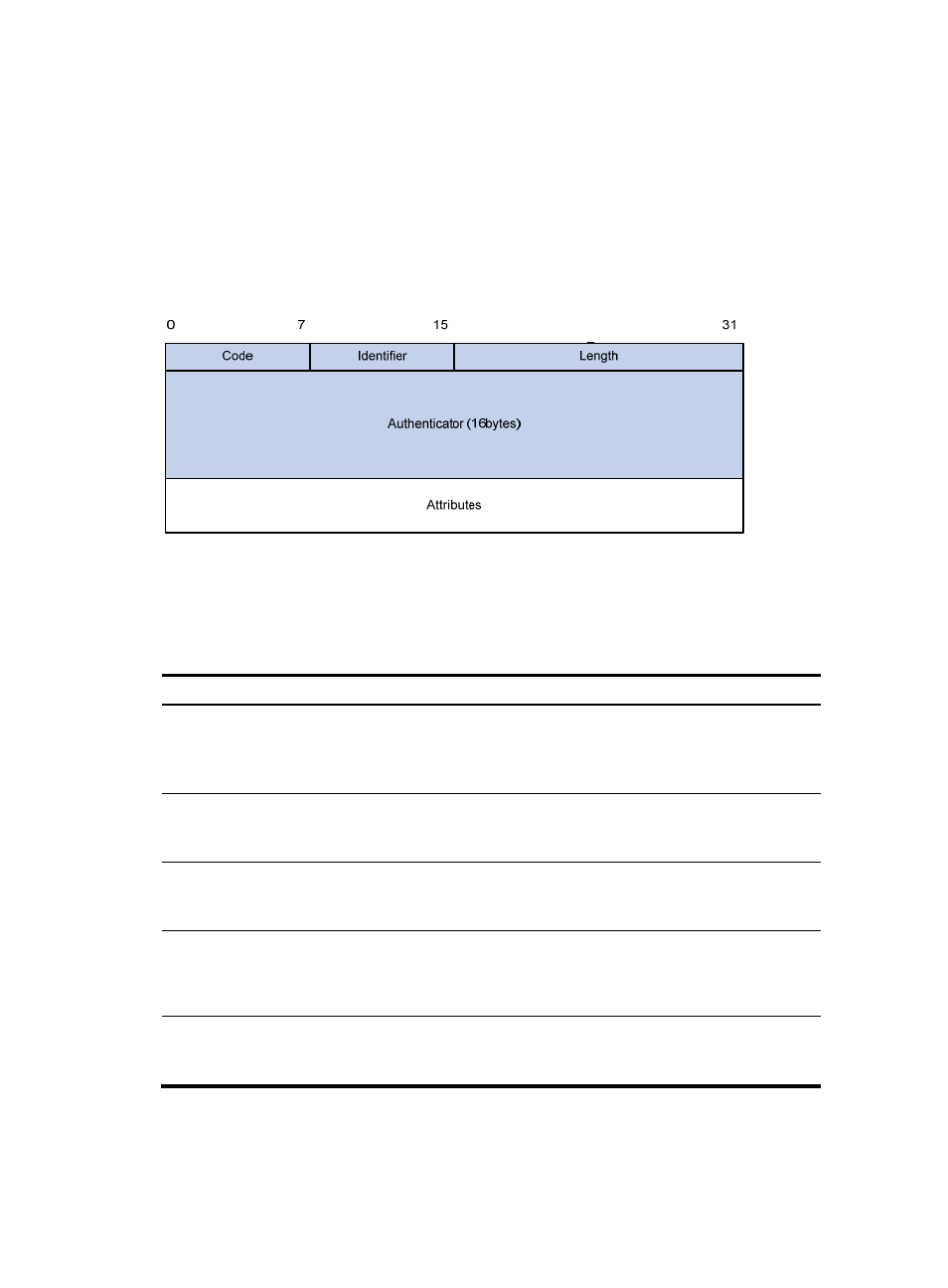Radius packet format – H3C Technologies H3C S6300 Series Switches User Manual
Page 19

4
9.
The RADIUS server returns an acknowledgement (Accounting-Response) and stops accounting for
the user.
10.
The RADIUS client notifies the user of the termination.
RADIUS packet format
RADIUS uses UDP to transmit packets. The protocol also uses a series of mechanisms to ensure smooth
packet exchange between the RADIUS server and the client. These mechanisms include the timer
mechanism, the retransmission mechanism, and the backup server mechanism.
Figure 4 RADIUS packet format
Descriptions of the fields are as follows:
•
The Code field (1 byte long) indicates the type of the RADIUS packet.
gives the main values
and their meanings.
Table 1 Main values of the Code field
Code Packet
type
Description
1 Access-Request
From the client to the server. A packet of this type includes user
information for the server to authenticate the user. It must contain the
User-Name attribute and can optionally contain the attributes of
NAS-IP-Address, User-Password, and NAS-Port.
2 Access-Accept
From the server to the client. If all attribute values included in the
Access-Request are acceptable, the authentication succeeds, and the
server sends an Access-Accept response.
3 Access-Reject
From the server to the client. If any attribute value included in the
Access-Request is unacceptable, the authentication fails, and the server
sends an Access-Reject response.
4 Accounting-Request
From the client to the server. A packet of this type includes user
information for the server to start or stop accounting for the user. The
Acct-Status-Type attribute in the packet indicates whether to start or stop
accounting.
5
Accounting-Respons
e
From the server to the client. The server sends a packet of this type to
notify the client that it has received the Accounting-Request and has
successfully recorded the accounting information.
•
The Identifier field (1 byte long) is used to match response packets with request packets and to detect
duplicate request packets. The request and response packets of the same exchange process for the
same purpose (such as authentication or accounting) have the same identifier.
